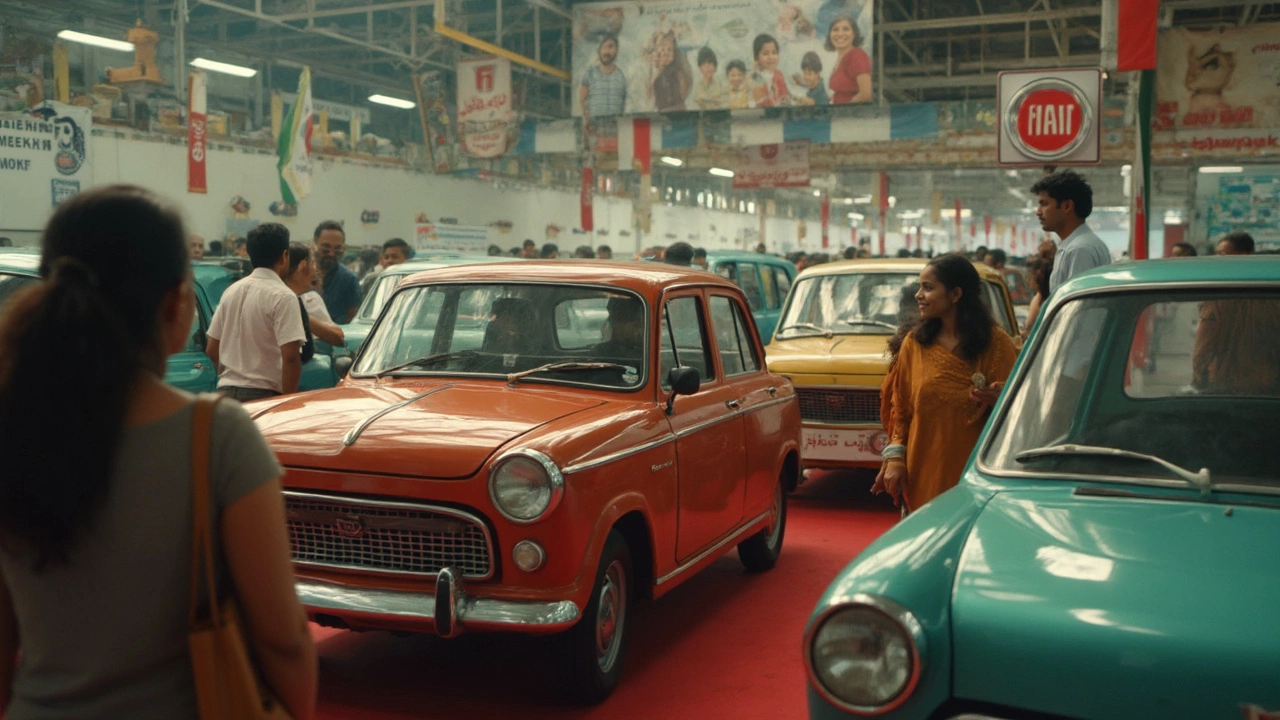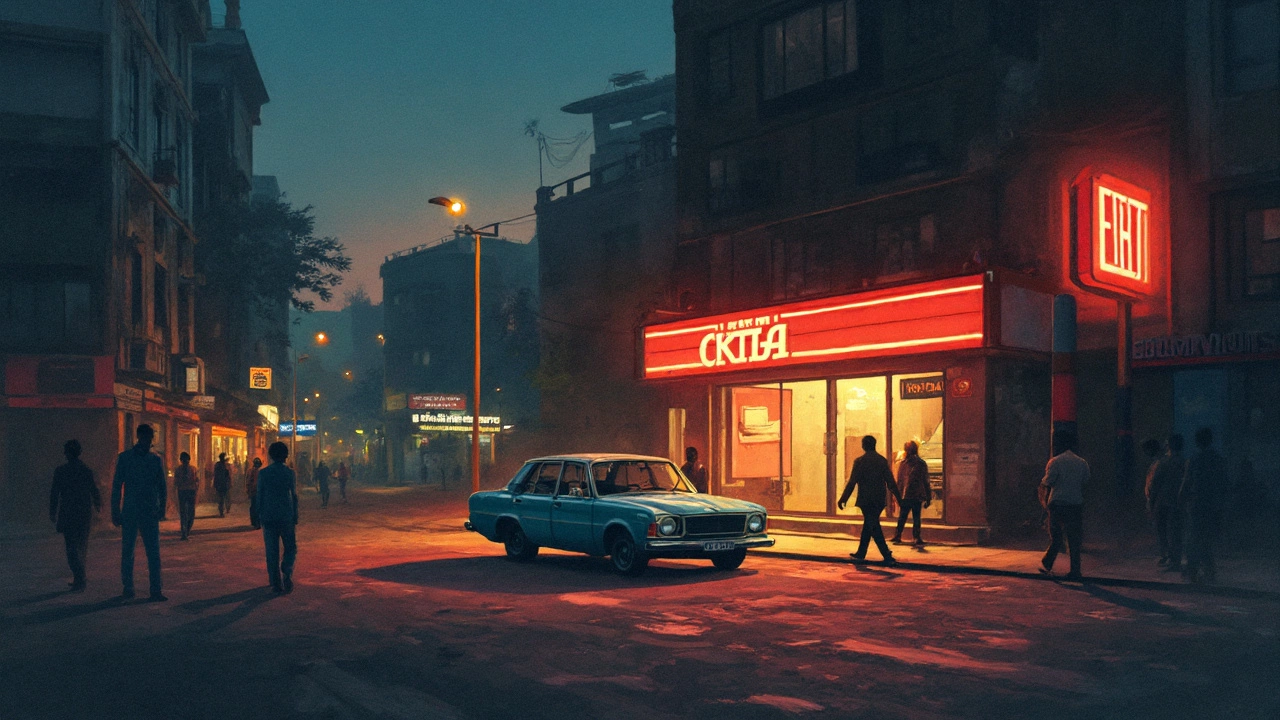
Ever wondered why you don't spot any new Fiat cars on Indian roads anymore? You're not alone. Fiat showed up in India full of hope, but things clearly didn’t go as planned. Their exit wasn’t sudden—there were red flags, and every car owner who’s either driven a Palio or tried to get spare parts has a story to tell.
If you’re thinking about buying used European cars or you're just curious about why big brands struggle to crack India, Fiat’s bumpy ride has a lot to teach. Customer support issues, shifting market trends, and some quirky decisions all played a role. For current Fiat owners, spare parts and service worries became real overnight, and for the rest of us, it's a lesson in what car buyers actually value versus what car companies think matters most.
- A Promising Start and Early Hype
- Where Things Began to Crack
- What Pushed Fiat Out of India
- What Fiat's Exit Teaches Buyers and Manufacturers
A Promising Start and Early Hype
Back in the late ‘90s and early 2000s, Fiat was getting a lot of attention in the Fiat India story. The brand teamed up with Premier Automobiles to get a foot in the door. Their first model, the Fiat Uno, actually broke records in 1997 with over 20,000 bookings—people lined up to get a piece of that European badge.
The Uno was roomy and sturdy, making it a big hit with Indian families, at least at first. The buzz continued in 2001 with the Palio, a hatchback that looked smart and offered a level of safety that almost no other car in the segment had at the time. For many, the Palio was that first taste of a "premium" hatchback, long before that was even a thing in India.
"Fiat’s arrival raised expectations for what a hatchback could be in India,” said Hormazd Sorabjee, Editor of Autocar India, in a 2002 issue. “People saw European quality at a price they could manage."
Just to get a sense of the numbers, here’s a quick look at Fiat India’s car launches and their impact:
| Year | Model | Bookings/Sales Highlight |
|---|---|---|
| 1997 | Fiat Uno | 20,000+ bookings in first launch wave |
| 2001 | Fiat Palio | Created a premium hatchback buzz in India |
| 2009 | Fiat Punto & Linea | Saw initial excitement, especially among young buyers |
Fiat even shared dealerships with Tata Motors to widen their reach. For a while, it felt like Fiat might actually become a top player in the Indian scene. Their European engineering, tough build, and safety focus had buyers talking.
But if you look closer, some headaches were already brewing. While the start was impressive, the real story was just getting warmed up.
Where Things Began to Crack
At first, Fiat had decent buzz in India—cars like the Uno or the Palio actually built a strong fan base. But, early trouble started brewing with quality issues. The Uno, for example, gained a reputation for delayed deliveries. Many buyers booked cars, but they waited months for delivery. Frustration set in pretty fast, and some never even saw the cars they booked. You don't win Indian customers like that.
Service was Fiat's next big headache. Authorized service centers were patchy, especially outside big cities. Owners struggled to get parts. Routine fixes took weeks—sometimes months. When you depend on your car to get to work or drop off your kids (like I've done countless times), that’s a deal-breaker. Word got around—"Don’t buy a Fiat unless you love trouble."
Another big hit was their odd partnership moves. In 1997, Fiat teamed up with Premier Automobiles, hoping for an easy entry. Instead, it ran into trouble because of conflicting management styles and lack of investment in after-sales networks. That partnership collapsed by 2001. Then, Fiat joined hands with Tata Motors. On paper, it made sense—they'd share showrooms and service. But in practice? Tata sales staff focused on their own cars, not Fiats. Customers felt ignored. Sales people would often push you toward a Tata instead.
Poor marketing was just the icing on the cake. While Maruti and Hyundai kept things fresh, Fiat barely updated its models. For almost a decade, the Linea and Punto looked the same. No fancy tech, no features that families in India love. By the time Fiat realized Indian buyers wanted more than just "European engineering," it was already too late. Sales dropped every year, and the brand lost its spot in the Fiat India story.

What Pushed Fiat Out of India
Let’s get real about why Fiat decided to call it quits in India. It boils down to a mix of tough competition, lack of fresh models, service headaches, and decisions that just didn’t click with Indian buyers. When you lay out the facts, it’s easy to see where things unraveled.
First off, new model launches were few and far between. Fiat stuck with its old lineup for way too long—cars like the Punto and Linea kept getting small updates but never a true makeover. Compare this to brands like Maruti Suzuki and Hyundai that rolled out new models almost every year. Indian buyers want choice. Fiat just couldn’t keep up.
Then there’s the biggie: after-sales service. People care about reliable service more than cool headlights or Italian badges. Fiat partnered with Tata Motors hoping for a quick fix by sharing dealerships. But this didn’t help much. Many Tata dealers simply focused on Tata cars, leaving Fiat customers frustrated. There were stories everywhere about long waits for car parts and mechanics who barely knew what to do.
Add to this the big change in market trends. Indian buyers started shifting toward SUVs and feature-packed hatchbacks. Fiat didn’t have much to offer here. Brands like Renault, Maruti Suzuki, and Hyundai jumped on the SUV train, and so did buyers. Fiat’s focus on their tried-and-tested but outdated models meant they got left behind.
The engine story is interesting too. Fiat’s 1.3-litre diesel engine was a hit, but mostly for other brands like Maruti Suzuki and Tata. Brands came to Fiat just for that engine, and it powered super-popular models like the Swift and Dzire. But, when India moved to stricter Bharat Stage VI emission norms in 2020, Fiat didn’t update the engine. That was the final nail in the coffin.
- Stale model lineup with the same cars for years
- Poor after-sales experience with parts and service
- No big hit in the SUV or compact segment
- Losing out on popular diesel engine sales after emission rule changes
- Brand confidence faded with every bad experience
Here’s how Fiat’s numbers looked before they left:
| Year | Fiat Cars Sold in India |
|---|---|
| 2012 | ~11,980 |
| 2016 | ~6,800 |
| 2018 | ~2,600 |
| 2019 | Less than 1,000 |
When you line up the facts, you see the Fiat India story was less about major blunders and more about slow action and missing what Indian car buyers really wanted. It’s a reminder for anyone looking at international brands: if you don’t adapt, you get left behind.
What Fiat's Exit Teaches Buyers and Manufacturers
Fiat leaving India is a reality check for both car buyers and companies hoping to make it big in the Indian car market. There are some pretty clear takeaways if you're paying attention—stuff that matters no matter if you’re a buyer spending your savings or a company plotting the next big launch.
First off: after-sales support is everything. Fiat owners suddenly faced real headaches finding parts and service outlets. Even when Fiat was still around, many complained about long waits for spares and patchy dealer reach. A survey in 2018 found less than 100 authorized service centers left in the country, compared to Maruti’s 3,000+—that’s a huge gap.
Buyers, don’t get too swept up by cool ads or brand names. Always check how big the service network really is—can you get your car fixed fast in your city or hometown? If not, think twice. For brands, local support can make or break your presence. Indian roads are full of surprises, and folks won’t touch a brand if it means hassle for repairs.
Next up, trust and communication: Fiat relied on models like the Punto and Linea for too long without major updates. Meanwhile, customer tastes changed fast—SUVs, automatics, better mileage—Fiat lagged behind. According to 2017 sales data, Fiat managed to sell barely 1,200 cars compared to Hyundai’s 52,000 per month. Buyers want to see regular updates and features that matter to them. Brands that ignore this lose out, fast.
- Look for brands with a wide and growing service network.
- Check how often the car models are updated and what features are offered.
- Don’t ignore real customer reviews (not just ads or celebrity endorsements).
- If you already own a Fiat, find a trusted independent mechanic for spares and upkeep.
Let’s put some numbers down:
| Year | Fiat Cars Sold (India) | Number of Service Centers |
|---|---|---|
| 2015 | 6,000 | 120 |
| 2017 | 2,600 | 95 |
| 2019 | Rare—mostly Jeep sales | 80 |
Big brands aren’t a guarantee of support. The Fiat story proves that you really need to check the practical side—service, spares, and long-term plans—no matter how famous or established a carmaker is. Next time you’re car shopping, remember what happened here. It saves a lot of headaches afterwards.